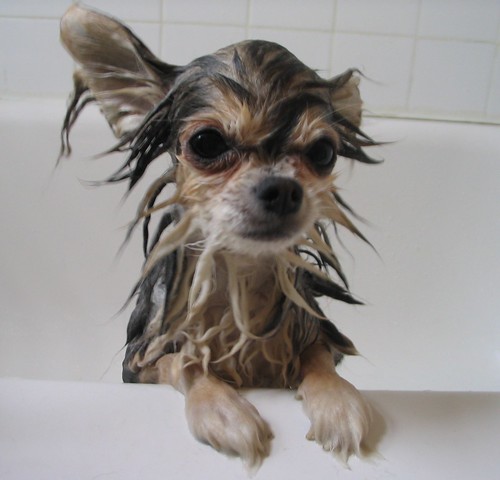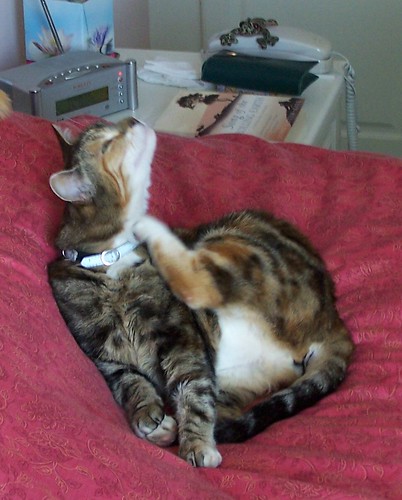Life as a zookeeper provided me with countless unforgettable experiences. I place rearing orphaned mammals – creatures I never expected to see up close, much less handle – right at the top of my list. I’ve had the great fortune to have raised a number of species (i.e. Snow Leopards, Gorillas, Wolves, Red Pandas), but it is the good-natured Capybara that I remember most fondly.
Observations in Venezuela
Largest of the world’s rodents, Capybaras inhabit river edges and flooded grasslands from Panama to northern Argentina. Quite common on a cattle ranch in the Venezuelan llanos where I was involved in Green Anaconda research (please see Hunting Anacondas in the Venezuelan Llanos), I was able to spend a great deal of time observing them.
Near the ranch buildings, they were quite tame, even wandering through open doors on occasion. The Capybaras that lived further out on the llanos, however, were entirely different creatures. Their meat is considered a delicacy, and they have learned to charge headfirst into the water, uttering their strange “barks”, upon sighting people.
A Capybara Ruins my Film…
The Capybara is a highly social animal. Females are very protective of their
young (I’ve seen them stand between intruders and their litter on many occasions), and the dominant male will try to hold off a threat while his harem flees.
Well, not always…while explaining this very behavior during the filming of a sequence on Capybaras, I was made to look foolish by a male who considered chivalry quite dead. Approaching a group by boat and with my back to the Capybaras, I rambled on about the male’s soon-to-be-seen valor. Noticing my colleagues laughing hysterically, I turned to see him disappearing into the brush, leaving his females and offspring unprotected and confused!
Capybaras as “Pets”
Baby Capybaras, or “Chiguires”, as they are known in Venezuela, are often taken in and raised until their care becomes too much of a burden (multiply your Guinea Pig’s droppings a thousand-fold, add the need for a pond, and you’ll see why they are not ideal house pets!). After that, they are kept at semi-liberty – feeding largely on their own but returning to their adopted families regularly. On many Venezuelan ranches, Jaguar, Puma, Caiman and Anacondas render life dangerous for a solitary Capybara unschooled in the ways of the wild, and I imagine that some meet their end when they wander too far afield.
I cannot recommend a Capybara as a pet – their teeth are not to be believed, and throughout their range stories persist of hunters and horses killed by bites that severed leg arteries. And no matter how well adjusted, any wild animal remains wild – those that become very calm are in a sense all the more dangerous, as it is easy to forget that they are not domesticated. However, cared for in a zoo setting, by well-experienced keepers, Capybaras make ideal animals for use in educational programs. They are just as responsive as their cousins, the Guinea Pigs, and readily bond to people who care for them…and it’s hard to put into words the looks on the faces of children when a “tame” Capybara enters the classroom!
Learning More
If you are interested in working with wild mammals, consider becoming a licensed Wildlife Rehabilitator. Learn more here.
I was surprised to learn that a small population of Capybaras – released pets, no doubt – thrives in northern Florida. For more info, please see this article.
 These words, by an unknown author, are the referred to as the K-9 Promise. They are inscribed on many of the memorials and tributes dedicated to War Dogs and K-9 units across our nation – memorials created to remember the thousands of canines who served with American handlers in all branches of the U.S. Military and in all wars foreign and domestic. When you remember servicemen who have given their lives for their country this Memorial Day, remember that many who returned home may owe their lives to these four-pawed heroes and friends. Read More »
These words, by an unknown author, are the referred to as the K-9 Promise. They are inscribed on many of the memorials and tributes dedicated to War Dogs and K-9 units across our nation – memorials created to remember the thousands of canines who served with American handlers in all branches of the U.S. Military and in all wars foreign and domestic. When you remember servicemen who have given their lives for their country this Memorial Day, remember that many who returned home may owe their lives to these four-pawed heroes and friends. Read More » That Pet Blog That Pet Place Pet Blog
That Pet Blog That Pet Place Pet Blog


 It’s important to safe guard your pet against pests that can carry deadly diseases like Lyme disease. However, it is also important to remember that these medications are still pesticides and should be handled with care. The EPA found that some dogs, usually smaller breeds, and cats could have potentially harmful reactions to spot-on flea and tick treatments. Reactions ranged from skin irritation to more severe medical conditions like seizures, and in a few cases, even death. Most of the reactions were caused by “overdose” or using too much of the topical product for the size of the pet. Reactions in cats were typically the result of exposure to a dog- specific formula, either accidentally or through incorrect usage of the product. While the EPA mainly investigated “spot-on” flea and tick treatments, they recommend using caution with all
It’s important to safe guard your pet against pests that can carry deadly diseases like Lyme disease. However, it is also important to remember that these medications are still pesticides and should be handled with care. The EPA found that some dogs, usually smaller breeds, and cats could have potentially harmful reactions to spot-on flea and tick treatments. Reactions ranged from skin irritation to more severe medical conditions like seizures, and in a few cases, even death. Most of the reactions were caused by “overdose” or using too much of the topical product for the size of the pet. Reactions in cats were typically the result of exposure to a dog- specific formula, either accidentally or through incorrect usage of the product. While the EPA mainly investigated “spot-on” flea and tick treatments, they recommend using caution with all  important if your pet is weak, elderly, sick, on medication, pregnant or nursing. You should also carefully read all instructions before applying flea and tick treatments, especially if you have not used the product before. When purchasing a flea and tick treatments be sure to know the current weight of your pets to select the correct product.
important if your pet is weak, elderly, sick, on medication, pregnant or nursing. You should also carefully read all instructions before applying flea and tick treatments, especially if you have not used the product before. When purchasing a flea and tick treatments be sure to know the current weight of your pets to select the correct product.

 The experience has taught me a few lessons, mainly that some dogs really can (and will) eat anything if given the opportunity. I was always very careful about leaving things out or leaving doors open before, but (lesson #2) dogs can be very sneaky. Finally, I learned that both my dogs are integral parts of my life and that when it comes down to the wire I would do anything to make their lives long, healthy, and happy.
The experience has taught me a few lessons, mainly that some dogs really can (and will) eat anything if given the opportunity. I was always very careful about leaving things out or leaving doors open before, but (lesson #2) dogs can be very sneaky. Finally, I learned that both my dogs are integral parts of my life and that when it comes down to the wire I would do anything to make their lives long, healthy, and happy. It’s no secret that your pets need fresh clean drinking water every day for optimum health. It’s also no secret that cats and some dogs are very finicky about, well, pretty much everything! With the warmer weather approaching I want to talk about your pet’s drinking habits.
It’s no secret that your pets need fresh clean drinking water every day for optimum health. It’s also no secret that cats and some dogs are very finicky about, well, pretty much everything! With the warmer weather approaching I want to talk about your pet’s drinking habits.